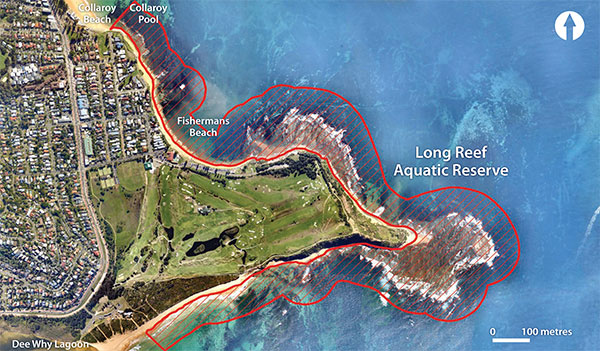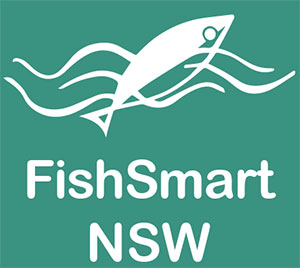
Respecting the reserve
Long Reef is valuable for many reasons and its conservation is important.
You can help conserve Long Reef Aquatic Reserve by understanding what you can and cannot do in the reserve.
What can you do at Long Reef Aquatic Reserve?
Study marine life. Long Reef Aquatic Reserve is popular with school groups, university students and marine researchers.
Fish for finfish (fish with a backbone) by hand-held line or spear only, subject to other NSW fishing rules and regulations.
Enjoy the water. Swim, snorkel, dive, surf, go boating.
Explore and appreciate. Explore the rock platform or just take in the beauty of the area.
What can’t you do at Long Reef Aquatic Reserve?
To help conserve Long Reef, no invertebrate animals (animals without a backbone), or marine plants (whether alive or dead) can be taken, collected or interfered with in this aquatic reserve.
Dead plants and animals provide habitat and/or food for other living things. For example, a hermit crab will use an old shell for protection. The reserve is also an important site for many species of migratory shorebirds.
Please don’t:
❌ collect marine animals or plants from the shore (alive or dead)
❌ collect shellfish or empty shells
❌ collect bait or use the marine animals or plants to feed fish
❌ fish for squid, cuttlefish or other marine invertebrates
❌ turn over rocks or move animals or plants.
Please do:
✅ walk carefully to avoid damaging or disturbing the animals and plants
✅ take your litter with you – better still, Take 3 For The Sea
✅ respect other people using this area.
Please report:
- Illegal activities, including damage to aquatic habitats to the Fishers Watch Phoneline on 1800 043 536 or online www.dpi.nsw.gov.au/report-illegal-activity
- Water pollution or fish kills to the local council or the Environment Line 131 555
- Maritime and boating safety issues 13 12 36
- Suspected aquatic pests or diseases to the Emergency Animal Disease (EAD) Hotline 1800 675 888 or email aquatic.biosecurity@dpi.nsw.gov.au
- Injured or sick marine mammals, reptiles or seabirds to a licensed wildlife rehabilitation group or National Parks and Wildlife on 1300 072 757.
NSW FishSmart app
Download the NSW DPI FishSmart App for all the essential information you need to fish in NSW
The app includes bag and size limits, closed seasons and fishing gear rules.
It also provides maps of Aquatic Reserves and Marine Park zones, downloadable guides to spearfishing, fishing safely, and regional fishing information.



